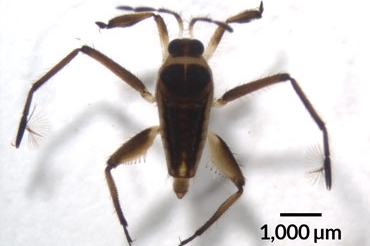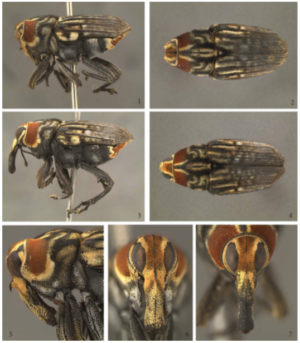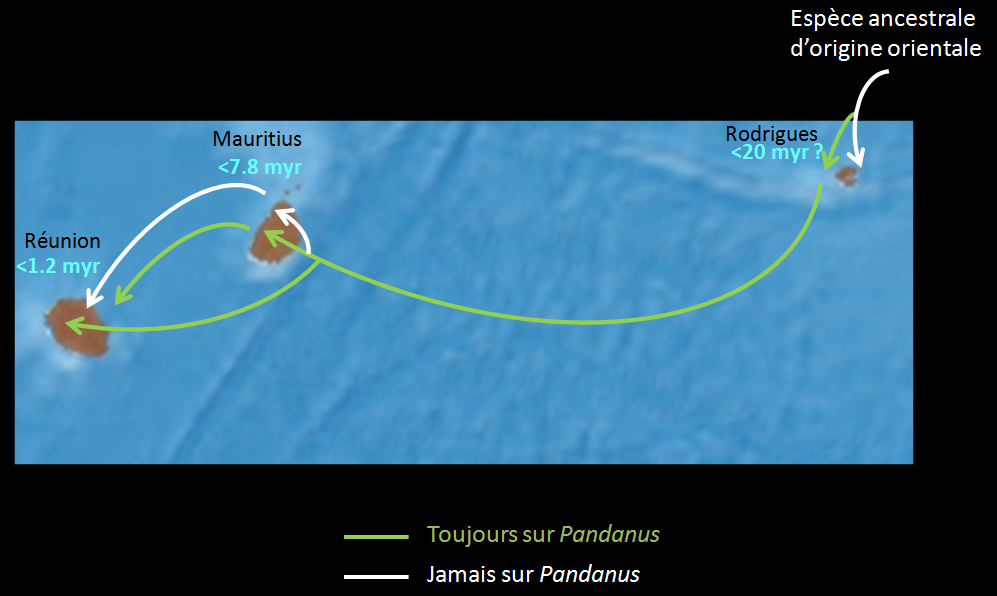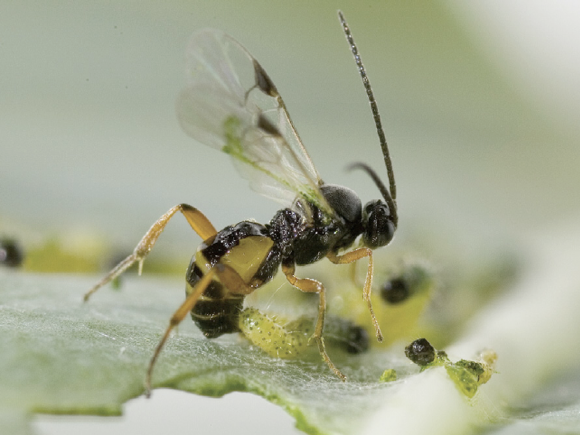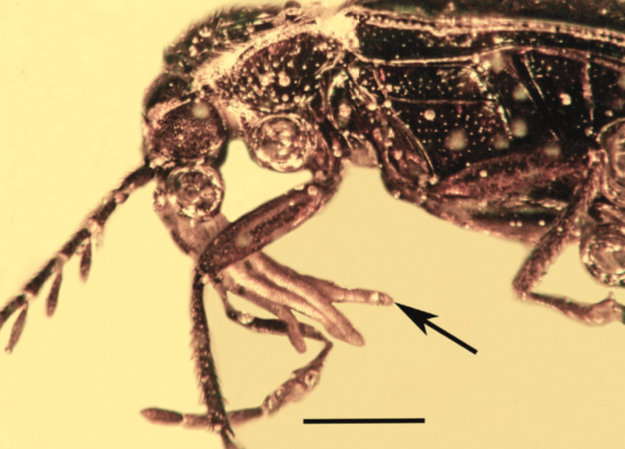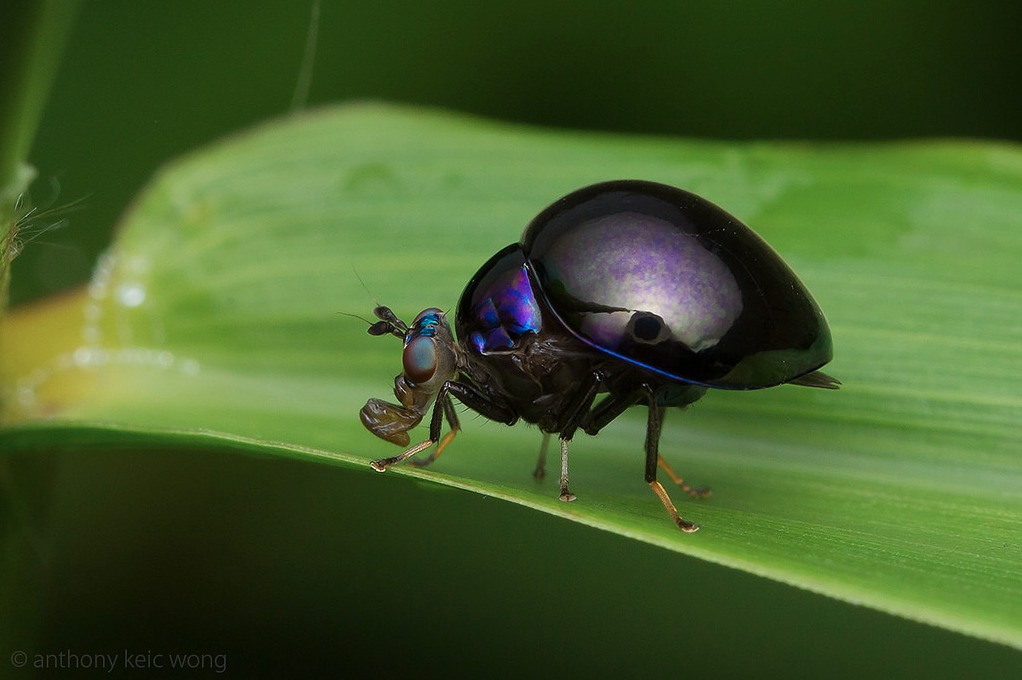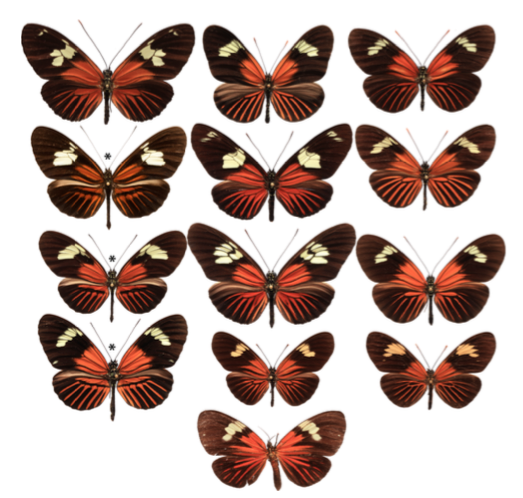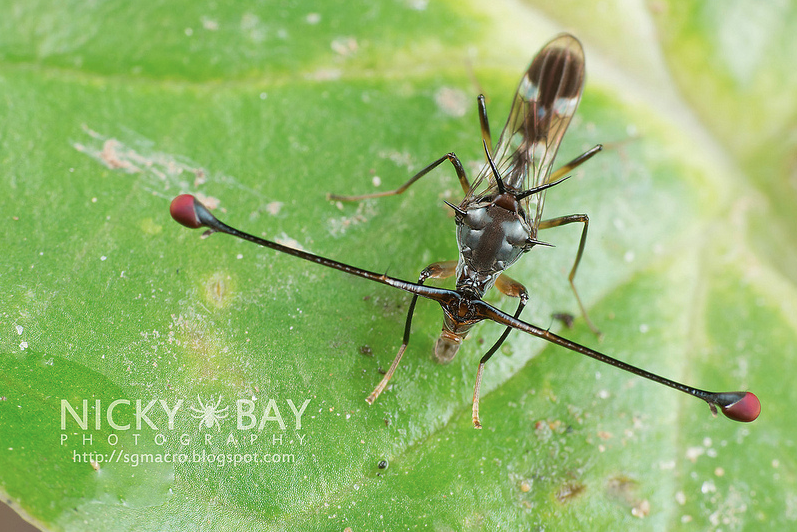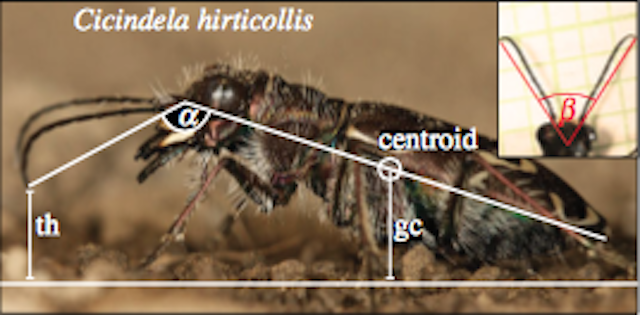Genes at the origin of new traits giving access to a new environment chez la punaise Rhagovelia (Heteroptera, Gerromorpha, Veliidae) Evolutionary innovations result in the appearance of new structures or behaviours during evolution (ex lien), a coloration pattern in butterflies (lien). The theory predicts that these events of appearance are unique to each innovation and…
Tag: evolution
The ovipositor of parasitoid hymenoptera: how micro-surgery is inspired by nature’s inventions
By Pascal ROUSSE In the world of parasitoids (lire this article), the ovipositor, also called oviscapte (abdominal appendix with which eggs are deposited), has a crucial role since it allows to locate precisely the egg laying in space and time, which is essential when it has to match the biological cycle of the host. Before…
Conoderinae: the Brazilian weevil who thinks He’s a fly!
Widespread in Curculionidae beetles, also known as weevils, mimicry offers astonishing models of study in these Species. Two Brazilian entomologists, Sergio A. Vanin (department of zoology-university of Sao Paulo) and Tadeu J. Guerra (department of Biology-federal University of Minas Gerais), have described in 2012 a new remarkable species of weevil that mimics Flies of the…
But where do the Ornebius of the Indian Ocean come from?
By Sylvain HUGEL The Mogoplistidae are a basal family of crickets, most of whose limbs are covered with flat, scaly bristles. None of them are capable of flying. A genus of Mogoplistidae is particularly diverse: the genus Ornebius which includes more than 100 species, mainly distributed in the Indo-Malaysian, Australian and Oceanian regions. Some species…
Two wasps, a caterpillar and a cabbage leaf
By Pascal ROUSSE Do you know what a parasitoid is? If so, you also know how fascinating their life cycle is. If not, you will soon know thanks to this detailed example. A paper written by the specialist Pascal Rousse for Passion-Entomologie, a big thank you to the author for agreeing to share his passion…
Orchids and beetles, a very ancient association
Post Views: 1,817 The first flowering plants to appear in the trias (-200 million years) diversified during the Cretaceous and all the Tertiary. caption id=”attachment_3567″
Diptera Celyphidae: when flies mimic Beetles
The world of insects sometimes contains surprising and mysterious species. Diptera (“flies”) Celyphidae are among them. caption id=”attachment_3078″ align=”alignright” width=”301″] Paracelyphus hyacinthus (Source : Anthony KeiC Wong-Flickr)[/caption] The name of this family comes from the Greek word “κέλυφος” which can be translated as “box” or “shell” which characterizes the most striking characteristic of these insects:…
Evolutionary history of Heliconius staining
Post Views: 1,868 In insects, wings are subjected to strong natural selection pressures for camouflage, mimicry and warning coloration. The patterns and colours of butterfly
Diopsidae flies: eyes perched far away!
Post Views: 3,371 Flies of the Diopsidae family have the amazing feature of having their eyes positioned at the tip of outgrowths called ocular peduncles
A speed that blinds!
Post Views: 1,576 One of the most universal needs of animals is to understand the environment in which they live to move in complex and

